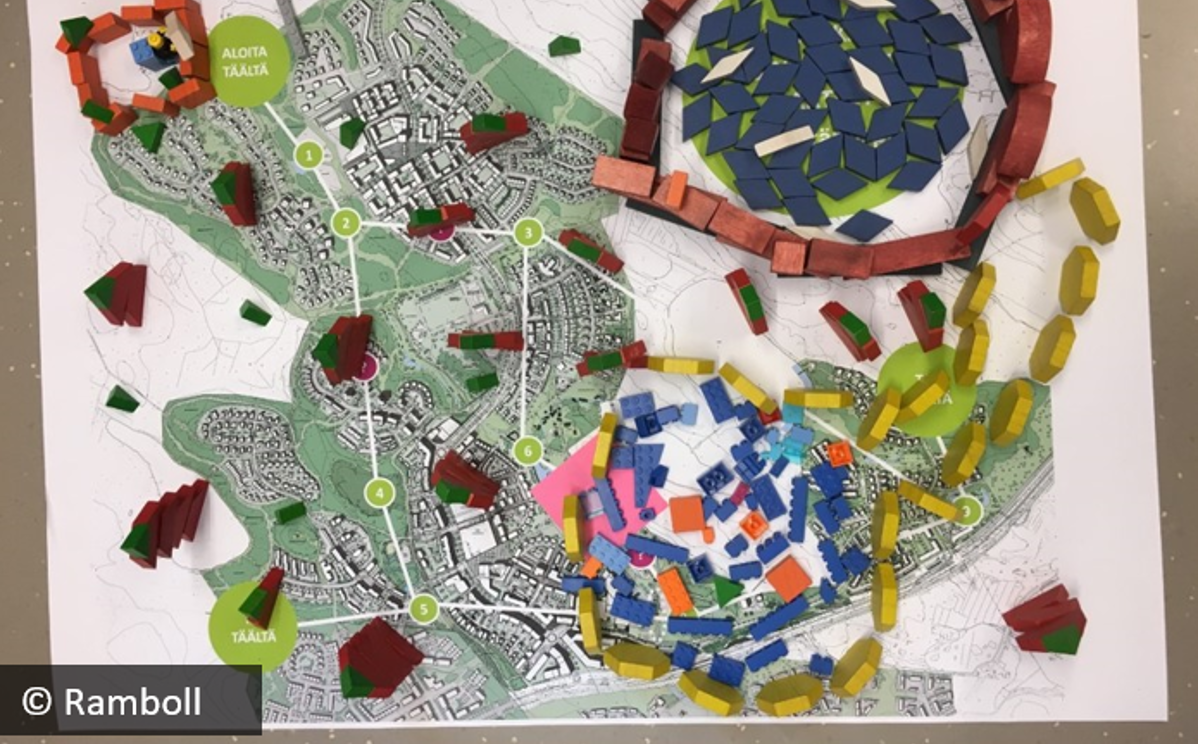
Children’s Urban Nature Lab in Vuores
- Thu, 07/06/2018
In April, a children’s urban nature lab was organised in Vuores, inviting children from day care centres, preschools and primary schools to participate in the development of nature-based systems in Vuores. The children learned about the role of basins and wetlands in water purification, the plants and animals found in the area and environmental research. The presentation by the storm water experts was followed by workshops in the classrooms on the theme “the storm water system of my dreams”.
The lab was part of the Urban Nature Labs (UNaLab) project. The aim of UNaLab is to develop nature-based solutions to the challenges of climate change. Storm water causes flooding in built areas, and nature-based solutions, such as wetlands, settling basins and green hollows, roofs and walls can help control the floods. For example, when storm water is filtered through vegetation and fine soil, its phosphorous, nitrogen and bacteria content decreases. Nature-based solutions mimic nature’s own ways of retaining and purifying water. They also make the area more comfortable and biologically diverse.
Recreational areas, water elements and insects – nature-based solutions suggested by children
Children approached the topic with the help of a board game introducing the existing nature-based solutions in Vuores on a map. They were encouraged to analyse the solution from the point of view of their daily lives and storm water control: how did the children feel about the place, what kinds of observations had they made of its nature and what would they like to have more of in each place.
The nature-focused preschools in Vuores used blocks to develop a range of devices for analysing, for example, the composition of waste and water and for purifying water. Many preschool children enjoy watching insects. Third-graders hoped Vuores would have more areas for recreation and climbing. According to the children, the Koukkuoja wetland should have more plants and floating plants. Third-graders designed insect hotels also for water insects and hoped that the water in the central park would be clean enough for swimming. Both first- and second-graders mentioned glazed elements near the water, even an underground tunnel where people could observe the water flow, fish species and other aquatic life. According to sixth-graders, Vuores would be cosier if it had fountains, walking paths, campfire sites and other recreational areas, and they also brought up nests for flying squirrels, owls and bats. They wished for a cafeteria with a green roof and walls in the Virolaistenpuisto park. Sixth-graders also mentioned the water that accumulates in the yard of the Vuores school, causing a bad smell.
![]()
Children want to spend time in nature
The children’s visions emphasised places where one can enjoy nature freely. Children of all ages wanted to have benches, campfire sites and other recreational facilities. Paths, bridges and other structures that promote camping and bicycling and pedestrian traffic were also mentioned. The children’s designs combined green nature and water treatment elements with the everyday life of the neighbourhood. The children’s wishes concerning water were also related to swimming and other venues, such as water slides. The children did not want to remove trees and bushes. To the contrary, they hoped there could be more of them, along with elements that facilitate nature watching, such as fixed binoculars and transparent structures. The children’s visions of a comfortable, natural neighbourhood where nature-based solutions support both resident comfort and biodiversity were finely constructed. Next, the Vuores school will organise an environmental monitoring campaign, observing the storm water basins and their effects on the quality of water and biodiversity.
Author: Annika Kettunen/Ramboll